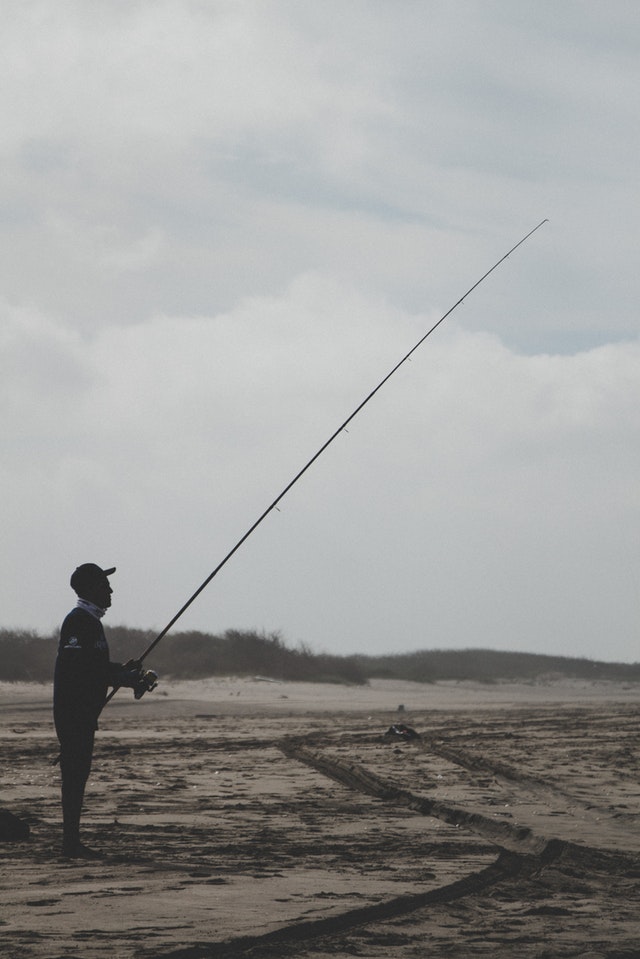Saltwater Fishing Type For Anglers
Saltwater Fishing Type For Anglers
Any newcomer to the saltwater fishery is probably going to battle with the recognizable proof of saltwater angle for some time. It would all be able to be somewhat of a puzzle at to start with, particularly with an angle that resembles, however, are really unique species. Is it a fluke or a place for instance? What's more, our beginner saltwater angler will likewise need to know whether it is a hazardous fish in any capacity. Is it a toxic fish to touch, and am I gambling ciguatera harming in the event that I eat it? So yes, revising the distinguishing proof of saltwater angle is sufficiently vital therefore alone, so these are the sorts of inquiries we will investigate.
There are a great many distinctive types of saltwater angle, by far most of which are either too little or too profound to draw in wear anglers. How about we backpedal to the fish that fall inside the extent of this site, beginning with...
Ligament
This gathering of saltwater angle incorporates sharks, beams, and beams and varies from genuine fish in that:
Their skeleton is worked of the ligament, no bones.
Their skin isn't made of scales, however, is unpleasant somewhat like sandpaper to touch.
Barring the tiny fish eating lounging shark, there are five sorts of sharks that might be focused by brandish anglers on the shores of the United Kingdom and Western Europe.
As appeared here, they are mako shark, porbeagle shark, blue shark, hammerhead shark and sifting shark.
Take in more about the distinctive kinds of sharks...
Work politeness of Osprey Publishing LTD
Skates and beams
So what's the contrast amongst skates and beams?
One of the key contrasts is that the beams bring forth live youngsters and that skating brings forth their young in egg cases-the "totes of the Sirens" or the "Fallen angel's Handbags"- which are frequently discovered washed on our Shores.
A few kinds of sharks, the less spotted dogfish for one, likewise utilize this way to deal with shield their young from starving predators.
Another is that the tail of the beam is generally thin, even whip-like at times, similar to the Stingray appeared here, and is typically furnished with a thistle on load up the midway observed on its length.
The tail of a skate is thicker than that of a beam and has no hot spine.
Work kindness of Gyldendal Norsk Forlag
Truth be told, for quite a while now, I have depended on this amazing wallet for the recognizable proof of salt water angle.
There are more than 1 000 distinct species portrayed, including data on range and natural surroundings, for example, profundities, foundation composes, water temperature, and saltiness.
Exceptionally significant data for those of us who are hoping to get them!
Bone Fish
The other primary gathering of saltwater angle is named hard fish, which are worked around a conventional skeleton that backings alternate parts of a fish.
For instance, all round fish (which are not sharks, stripes or skates) and flatfish are delegated hard fish, and also other demersal groundfish, for example, cod, haddock and Ling whiting, with Very prominent gamefish essentially with salt water.
Round Fish
Other round fish not specified in the past section incorporates the bar, mackerel, bream, mullet, Napoleon, dark Place and Pollock. Pollock and Black place are captured here. They are obviously fundamentally the same as, each highlighting three dorsal blades and two rear balances.
Numerous anglers think that its hard to differentiate amongst Pollack and dark place, yet the record of their right distinguishing proof is in the parallel line.
The sidelong line of the pollock is dim and has an articulated bend on the pectoral blade.
The sidelong line of the dark place is significantly lighter, relatively white, and keeps running in a straight line from making a beeline for the tail.
Flatfish
At the point when level fish hatchlings initially rise up out of their eggs and investigate an unfriendly marine world, they are symmetrical and swim vertically, with the eyes on either side of the head.
It is just amid their improvement that they demonstrate a stamped inclination for sneaking around on the seabed.
To make this level way of life a win, the eye that would some way or another get itself continually taking a gander at the seabed is moving towards the UPPERSIDE where it can be more helpful, and the swim bladder is ingested to enable flatfish to remain on the Seabed.
In fumble and place appeared here (two of the most widely recognized flatfish of the United Kingdom, however frequently another situation where the distinguishing proof of saltwater fish can be mistaken for some anglers) and with halibut, DAB and sole, the eyes are on The correct side.
In any case, on different types of flatfish, for example, turbot, unshaven, Cardine and tie, the eyes are on the left side.

The base of level fish is generally a pale white/dim relatively obscure and the darker side pigmented.
If you enjoy this article please share on Facebook, Twitter, Youtube, G+ so others can read it too. LIKE | COMMENT | SHARE | SUBSCRIBE











No comments
Help Us to improve our web by comments and suggestions.